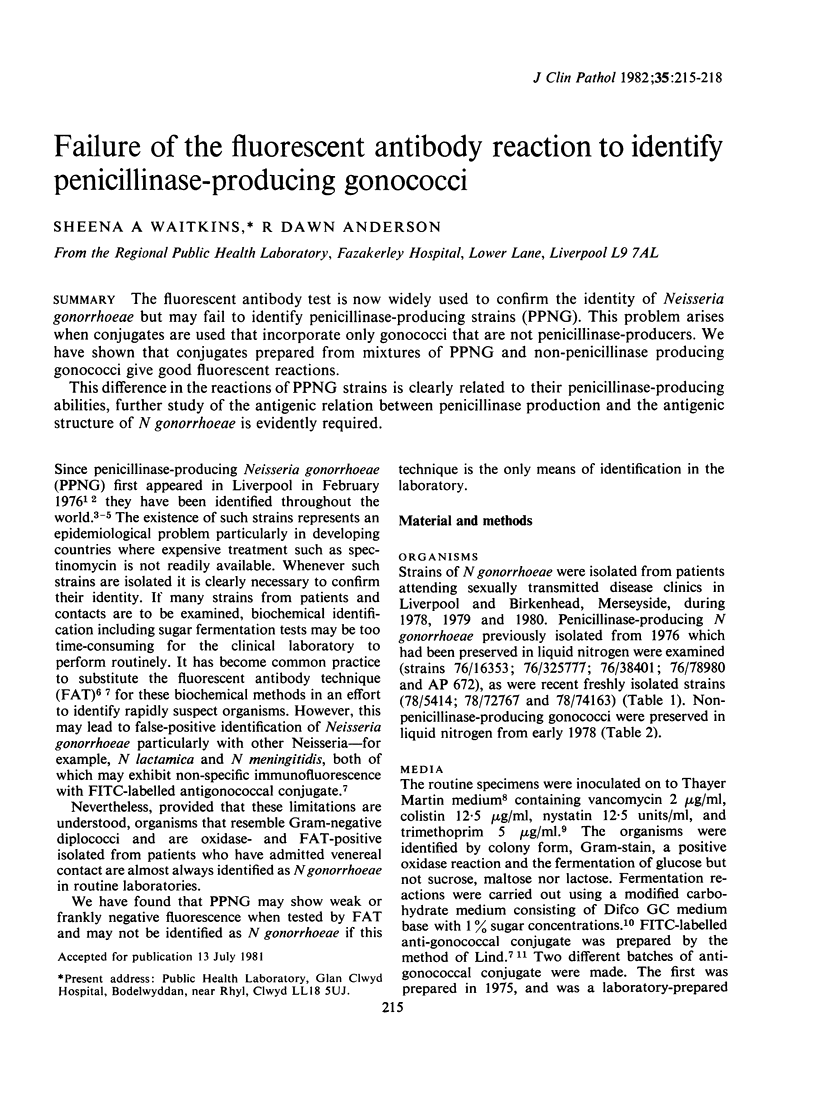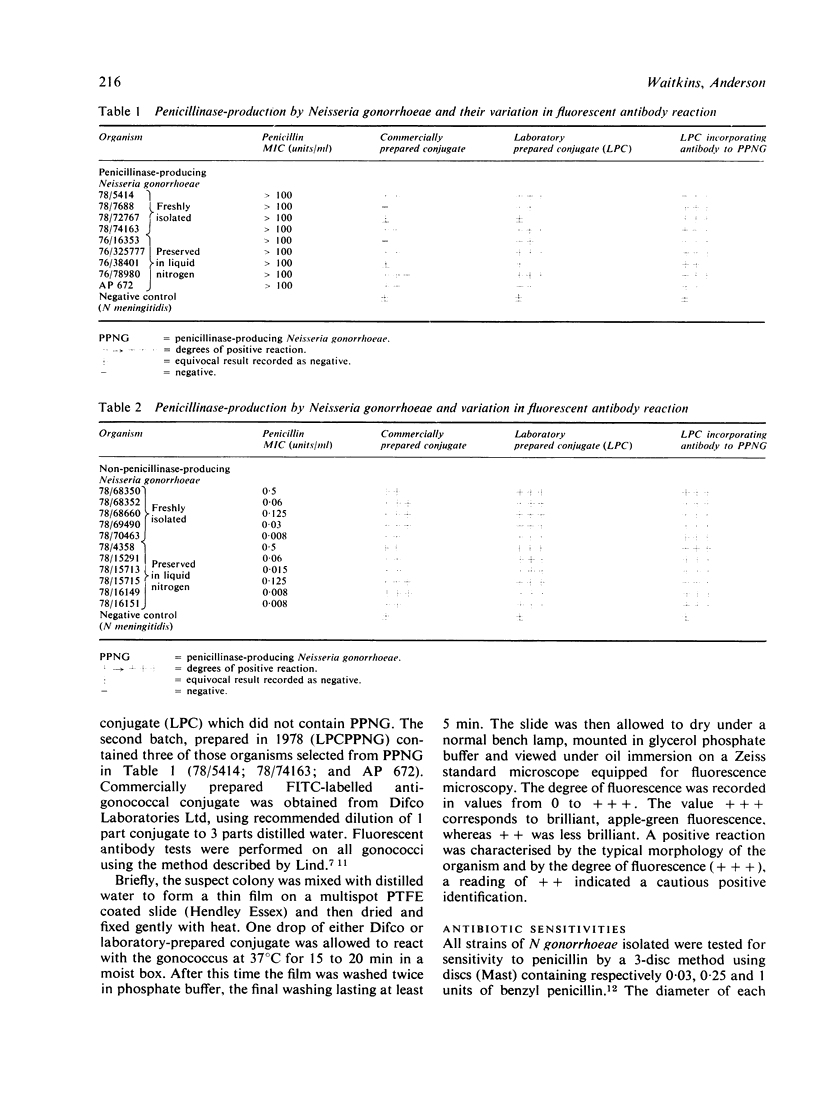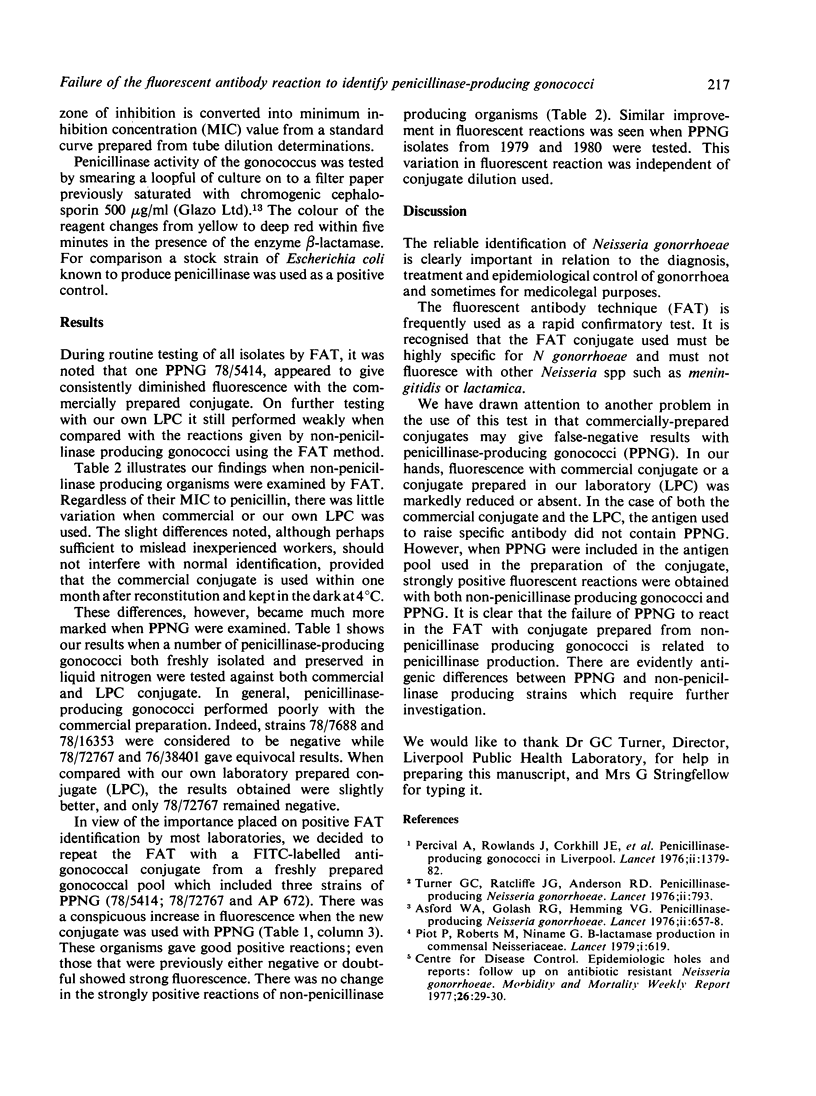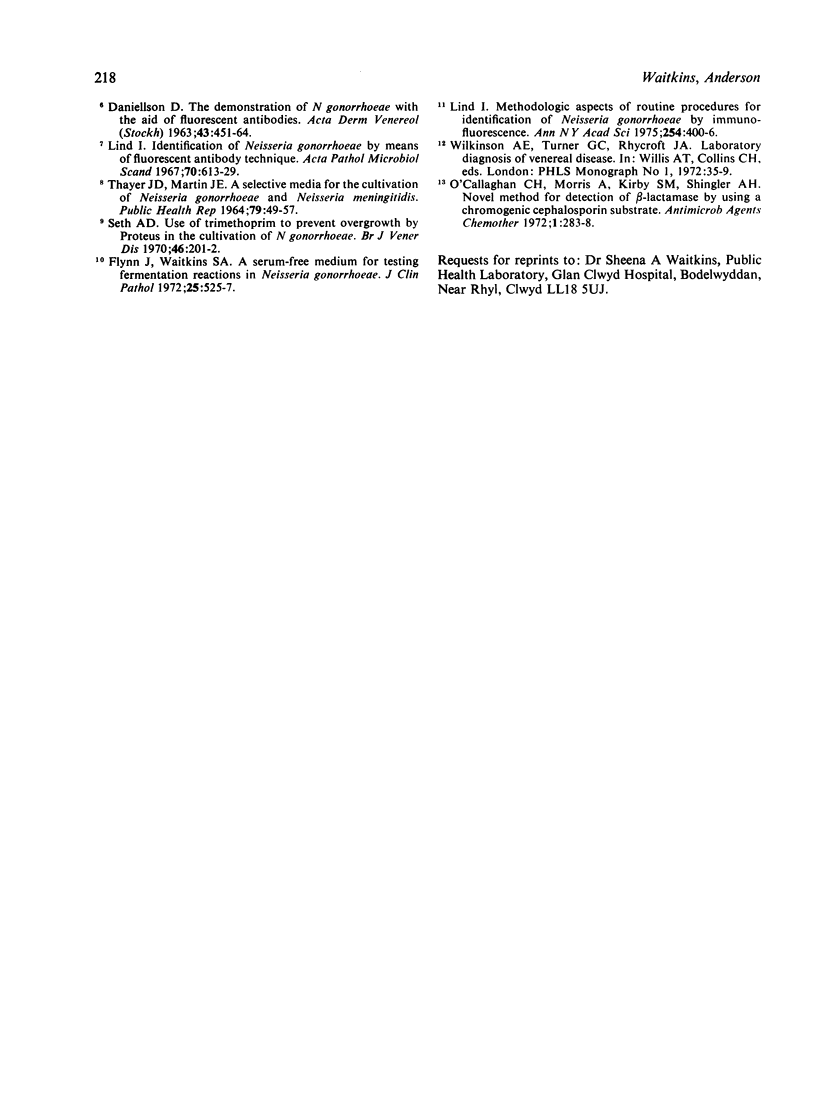Abstract
The fluorescent antibody test is now widely used to confirm the identity of Neisseria gonorrhoeae but may fail to identify penicillinase-producing strains (PPNG). This problem arises when conjugates are used that incorporate only gonococci that are not penicillinase-producers. We have shown that conjugates prepared from mixtures of PPNG and non-penicillinase producing gonococci give good fluorescent reactions. This difference in the reactions of PPNG strains is clearly related to their penicillinase-producing abilities, further study of the antigenic relation between penicillinase production and the antigenic structure of N gonorrhoeae is evidently required.
Full text
PDF



Selected References
These references are in PubMed. This may not be the complete list of references from this article.
- Ashford W. A., Golash R. G., Hemming V. G. Penicillinase-producing Neisseria gonorrhoeae. Lancet. 1976 Sep 25;2(7987):657–658. doi: 10.1016/s0140-6736(76)92467-3. [DOI] [PubMed] [Google Scholar]
- DANIELSSON D. THE DEMONSTRATION OF N. GONORRHOEAE WITH THE AID OF FLUORESCENT ANTIBODIES. 1. IMMUNOLOGICAL STUDIES OF ANTIGONOCOCCAL SERA AND THEIR FLUORESCEIN-LABELLED GLOBULINS, WITH PARTICULAR REGARD TO SPECIFICITY. Acta Derm Venereol. 1963;43:451–464. [PubMed] [Google Scholar]
- Flynn J., Waitkins S. A. A serum-free medium for testing fermentation reactions in Neisseria gonorrhoeae. J Clin Pathol. 1972 Jun;25(6):525–527. doi: 10.1136/jcp.25.6.525. [DOI] [PMC free article] [PubMed] [Google Scholar]
- Lind I. Identification of Neisseria gonorrhoeae by means of fluorescent antibody technique. Acta Pathol Microbiol Scand. 1967;70(4):613–629. doi: 10.1111/j.1699-0463.1967.tb01330.x. [DOI] [PubMed] [Google Scholar]
- Lind I. Methodologic aspects of routine procedures for identification of Neisseria gonorrhoeae by immunofluorescence. Ann N Y Acad Sci. 1975 Jun 30;254:400–406. doi: 10.1111/j.1749-6632.1975.tb29191.x. [DOI] [PubMed] [Google Scholar]
- O'Callaghan C. H., Morris A., Kirby S. M., Shingler A. H. Novel method for detection of beta-lactamases by using a chromogenic cephalosporin substrate. Antimicrob Agents Chemother. 1972 Apr;1(4):283–288. doi: 10.1128/aac.1.4.283. [DOI] [PMC free article] [PubMed] [Google Scholar]
- Penicillinase-producing Neisseria gonorrhoeae. Lancet. 1976 Oct 9;2(7989):793–793. [PubMed] [Google Scholar]
- Percival A., Rowlands J., Corkill J. E., Alergant C. D., Arya O. P., Rees E., Annels E. H. Penicillinase-producing Gonococci in Liverpool. Lancet. 1976 Dec 25;2(8000):1379–1382. doi: 10.1016/s0140-6736(76)91919-x. [DOI] [PubMed] [Google Scholar]
- Piot P., Roberts M., Ninane G. Beta-lactamase production in commensal Neisseriaceae. Lancet. 1979 Mar 17;1(8116):619–619. doi: 10.1016/s0140-6736(79)91061-4. [DOI] [PubMed] [Google Scholar]
- Seth A. Use of trimethoprim to prevent overgrowth by Proteus in the cultivation of N. gonorrhoeae. Br J Vener Dis. 1970 Jun;46(3):201–202. doi: 10.1136/sti.46.3.201. [DOI] [PMC free article] [PubMed] [Google Scholar]
- THAYER J. D., MARTIN J. E., Jr A SELECTIVE MEDIUM FOR THE CULTIVATION OF N. GONORRHOEAE AND N. MENINGITIDIS. Public Health Rep. 1964 Jan;79:49–57. [PMC free article] [PubMed] [Google Scholar]


